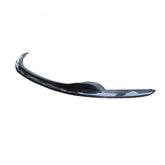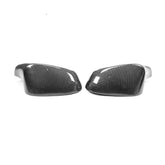The exhaust system plays a crucial role in a vehicle's performance, fuel efficiency, and emissions control. Understanding the materials used, the design choices available, and the benefits they bring can help you make informed decisions, whether you're maintaining, upgrading, or fully customizing your vehicle's exhaust. Here's a breakdown of key aspects to consider.

Materials Used in Exhaust Systems
-
Stainless Steel: The most popular material for aftermarket and high-performance exhausts, stainless steel offers excellent resistance to rust and corrosion, durability, and a polished look. It comes in various grades, with 304 stainless steel being the most premium due to its high chromium and nickel content, providing superior longevity.
-
Aluminized Steel: A more cost-effective option, aluminized steel features a steel core coated with aluminum-silicon alloy. This coating offers decent heat resistance and protection against corrosion. While less expensive, it doesn't quite match the longevity or rust resistance of stainless steel.
-
Titanium: Known for its exceptional strength-to-weight ratio, titanium is used in top-tier performance and racing exhaust systems. It offers the best in weight savings, durability, and heat dissipation but comes at a higher cost.
Exhaust System Designs
-
Single Exit Pipe: The most common and cost-effective design found in stock vehicles. It has one set of components and exits at the vehicle's rear or side. While practical, it may not offer the best performance or sound for enthusiasts.
-
Dual Exit Pipe: Typically seen on higher performance and luxury vehicles, dual exit pipes can improve exhaust flow and engine performance. This design also lends a more aggressive aesthetic to the vehicle.
-
Opposite Dual Exhaust: This design features two separate exhaust paths from the manifold to the back, reducing backpressure and improving performance. It's ideal for V-shaped engines.
-
Cat-Back: Refers to all components downstream of the catalytic converter, including the muffler and exhaust pipes. Upgrading to a cat-back system can improve airflow and sound without altering emissions controls.
-
Axle-Back: Involves replacing parts from the rear axle to the exhaust tips. While it primarily affects the sound of the exhaust, it offers minimal performance improvements compared to more comprehensive upgrades.
Benefits of Upgrading Your Exhaust System
-
Enhanced Performance: By reducing backpressure and improving exhaust flow, upgraded systems allow the engine to breathe better, resulting in increased horsepower and torque.
-
Improved Fuel Efficiency: Efficient exhaust systems can lead to more complete fuel combustion, thereby improving fuel economy under certain driving conditions.
-
Sound Enhancement: Many enthusiasts upgrade their exhaust systems to achieve a specific sound profile, from a deep rumble to a high-pitched racing tone.
-
Weight Reduction: High-performance materials like titanium significantly reduce weight, which can enhance handling and acceleration.
-
Aesthetic Appeal: An upgraded exhaust system can transform the look of a vehicle, adding to its sportiness and visual appeal with polished finishes and custom tips.
Choosing the Right System
When selecting an exhaust system, consider your vehicle's specific needs, your performance goals, and local regulations regarding noise and emissions. It's also important to balance the desire for improved performance and sound with considerations of cost and longevity. Whether you're aiming for a subtle upgrade or a full performance overhaul, understanding these key aspects of exhaust systems will guide you toward making the best choice for your vehicle.










